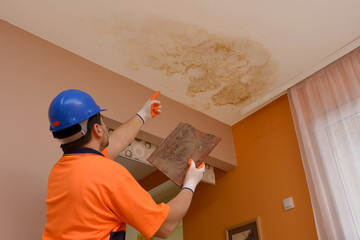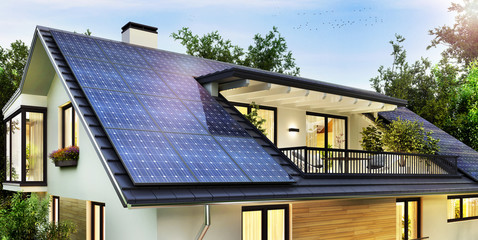Residential painting services are available for homeowners looking to upgrade their homes with a fresh coat of paint. Professional painters meet with clients to provide an estimate and discuss their vision for the space.
They use basic tools that are similar to those found in a home improvement store, such as paint trays, step ladders, and rollers. Bunbury Painting Service can also handle interior or exterior painting jobs.
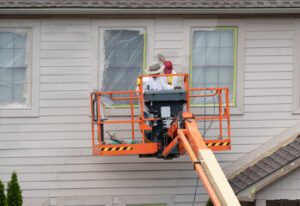 Professionalism
Professionalism
When it comes to hiring a painting service for your home or business, professionalism is the most important thing. A professional painter will always have your best interests in mind and will do everything they can to keep your project on time and within budget. They will also have the experience and expertise to tackle any problems that may arise during your project.
There are many different types of residential and commercial painting services, so it’s important to find the right one for your needs. Residential painters specialize in painting the interior and exterior of single-family homes, while commercial painters typically focus on larger industrial buildings and offices.
Some painting companies offer additional services, such as power washing and sandblasting. These services can help improve the appearance of your property and increase its value. In addition, they can remove stains from surfaces and prepare them for painting, which will save you time and money.
Another service that some painting companies offer is staining and varnishing. This can make wood surfaces look new and protect them from moisture damage. This is especially helpful for wood surfaces that are exposed to the elements, such as porches, decks, and patios.
Residential painters can also help you choose the right color for your home. They will be able to recommend the best colors for your space and suggest ways to incorporate them into your home’s decor. They can even create a focal point by painting one wall in a bold or contrasting color.
When choosing a residential painting company, it’s important to consider their experience and track record. Make sure they have a good reputation for completing projects on time and within budget. You can also ask for references from past clients.
While many people think that residential and commercial painting is the same, there are a few key differences between these two types of projects. Commercial painting is more involved and requires a higher level of skill than residential painting. Commercial painters often work on large, multi-family buildings, and they may need to use specialized equipment such as ladders or scaffolding. Additionally, they may be required to follow strict safety guidelines.
High-Quality Products
A fresh coat of paint can be one of the most cost-effective ways to boost your home’s curb appeal. Skilled and professional residential painters use high-quality painting products for superior results that last longer. They also work with you to come up with a painting plan that fits your budget and timeline. This way, you can rest assured that your home’s exterior or interior will look great without the expense and hassle of doing it yourself. Commercial painters usually need more people to handle larger projects, but even these professionals still use the highest quality paints and equipment. They know how to get the best out of their tools and can achieve a perfect finish every time. They have a proven track record and are dedicated to quality.
Safety
Regardless of whether a project is large or small, there are several safety hazards associated with painting that require proper equipment and expert handling. A residential painting service will take the necessary steps to protect themselves, their clients, and the building that is being painted.
Taking the right safety precautions prevents injuries and property damage during a painting project. This includes using sturdy ladders with non-slip feet, using hard hats and harnesses when working at heights, and taking electrical precautions like removing switch plates or relying on portable work lights instead of a power cord. Proper ventilation is important when indoor painting is being done as well. Breathing in paint fumes can cause dizziness, headaches, and nausea for some people. Opening windows and using fans to keep fresh air circulating can help prevent these health issues.
A quality residential painting company will also be properly trained in the use of all tools and supplies that are needed for the job. These include brushes, rollers, painting trays, and step ladders. They will also have a clear understanding of the different types of paint and how they can be used safely. This includes knowing what safety measures to take when working with solvent-based and high-VOC paints.
Properly storing and disposing of chemicals, sandpaper, paintbrushes, and other tools prevents the spread of dangerous bacteria throughout the building. This is crucial in reducing the risk of harmful mold, mildew, and other environmental concerns. Keeping the workspace clean will also minimize tripping hazards and other accidents that may occur on the job site.
When it comes to exterior painting, a good residential painting company will understand how to prepare the surface before applying a coat of primer and then a coat of paint. They will use proper masks and respirators to prevent breathing in dust, pollen, and other airborne contaminants. They will also use protective clothing and gloves to prevent skin irritation from contact with chemicals.
The most common painting projects are residential ones and require the use of basic materials and equipment that are similar to what you would find at a home improvement store. However, commercial painters require more complex equipment such as pressure washers, sandblasters, specialized paint sprayers, and scaffolding for high-rise buildings. They also need more experience in dealing with surfaces such as concrete, marble, and metal.
Timely Completion
When hiring a painting service, you want to make sure that they can complete the project promptly. They should be able to give you an estimated start and finish date for the work and show up on time. It is also important to choose a company that uses quality paints, as this will reduce the amount of time it takes for the job to be completed.
A professional painter will be able to spot any small weaknesses in the structure of your home and recommend corrective action that will ensure the long-term health and safety of your property. They will also be able to advise on the best type of paint and products to use for your home’s unique environment. They will ensure that the paint they use is of high quality and will not deteriorate over time.
Having a fresh coat of paint on your home’s exterior can bring it back to life and help increase its curb appeal, making it more appealing to potential buyers down the road. This can even save it from the damaging effects of moisture-causing rot. A professional painting company will be able to take your vision for your home’s interior and exterior and turn it into reality.
Residential painters are skilled at meeting the vision of homeowners for their homes, and they have a vast knowledge of paint types, colors, and application techniques. They are also adept at protecting furniture and floors from damage during the painting process. They can even add a touch of creativity to your home’s interior by painting an accent wall in a bold color that contrasts with the rest of the room.
A professional painting company will not only be able to make your home look great, but they can also provide you with top-rated customer service. They will be willing to answer any questions you may have about their services and will treat you with respect throughout the process. You should always check for reviews online and consult with previous customers to see what they thought of the company’s services.
Residential painting is an essential aspect of home maintenance and renovation. It involves applying paint or other protective coatings to the interior or exterior surfaces of a house. Whether you are looking to refresh the look of your home or protect it from the elements, residential painting can make a significant difference in both aesthetics and functionality.
One of the primary benefits of residential painting is enhancing the curb appeal of your property. A fresh coat of paint can instantly transform the exterior of a house, making it more attractive and inviting. It can also increase the value of your home, making it more appealing to potential buyers if you ever decide to sell.
Painting the interior of your home can also have a positive impact. It allows you to personalize your living space, create a specific ambiance, and reflect your style. Whether you choose to go for a neutral color palette or bold and vibrant hues, residential painting can help you achieve the desired atmosphere in each room.
Moreover, residential painting protects your home. Exterior paint acts as a barrier against the elements, shielding your house from moisture, UV rays, and other environmental factors that can cause damage. Interior paint can also protect surfaces from wear and tear, making them easier to clean and maintain.
When it comes to residential painting, it is essential to hire professional painters. They have the expertise, experience, and tools necessary to ensure a high-quality and long-lasting finish. From surface preparation to color selection and application techniques, professional painters can deliver exceptional results and save you time and effort.
In conclusion, residential painting is a valuable investment that can enhance the appearance, value, and protection of your home. Whether you are looking to refresh your space or prepare it for sale, professional painting services can help you achieve your goals and create a beautiful and functional living environment.
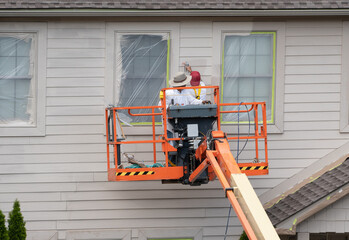

 Carpets act like air filters by trapping dust, dirt and allergens from the atmosphere. Over time, these pollutants become ground into the fibers and then released back into the air when the carpet is disturbed – for example, when people walk across it. Regular commercial carpet cleaning eliminates these trapped contaminants and improves indoor air quality. This is especially important for businesses that rely on customers or clients to visit their premises. Poor indoor air quality can cause health problems including headaches, eye irritation and difficulty breathing.
Carpets act like air filters by trapping dust, dirt and allergens from the atmosphere. Over time, these pollutants become ground into the fibers and then released back into the air when the carpet is disturbed – for example, when people walk across it. Regular commercial carpet cleaning eliminates these trapped contaminants and improves indoor air quality. This is especially important for businesses that rely on customers or clients to visit their premises. Poor indoor air quality can cause health problems including headaches, eye irritation and difficulty breathing.
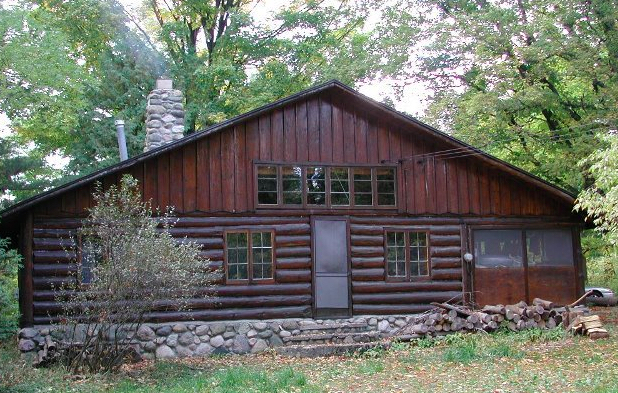
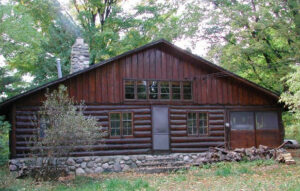 The wood that log homes are made of can be infested with wood-destroying insects. In some cases the logs become infested while they are still in the forest, or after they are debarked and used in construction. In either case, extensive cosmetic and structural damage can occur. The most common pests of log homes are long-horned beetles, flat-headed wood borers, and powderpost beetles.
The wood that log homes are made of can be infested with wood-destroying insects. In some cases the logs become infested while they are still in the forest, or after they are debarked and used in construction. In either case, extensive cosmetic and structural damage can occur. The most common pests of log homes are long-horned beetles, flat-headed wood borers, and powderpost beetles.


 Advertising
Advertising

